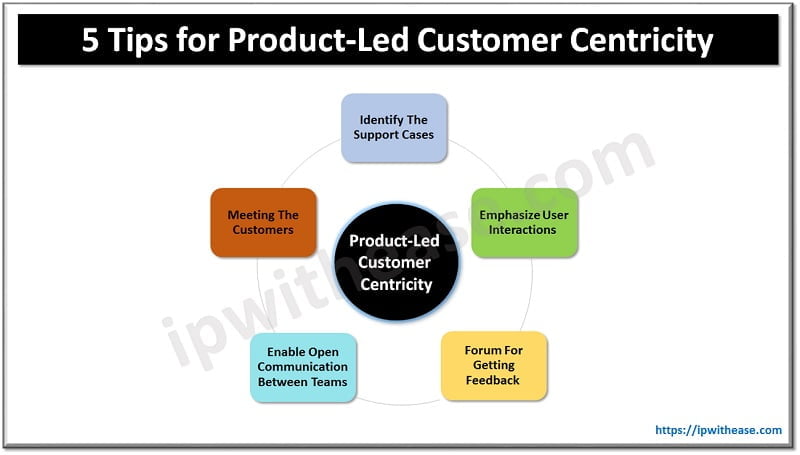Table of Contents
SEO stands for search engine optimization. The term covers a range of practices that enhance a website’s visibility online. A strong SEO performance establishes a business’s credibility, a key factor for long-term growth.
But this leads us to another question – what is SEO in marketing? Well, it’s all about using specific SEO techniques to promote a site and occupy top rankings in SERPs. In order to achieve that, it’s important to follow the best SEO practices, which usually include thorough keyword research, on-page optimization, technical SEO, and link building.
Best SEO Practices
If you have always been looking for ways to make your business websites perform well in search engines, we’ve got you covered. Here’s everything you need to know about making SEO work in your favor.

Perform Extensive Keyword Research
Search engine keyword ranking helps create content that incorporates the business’s most frequently used search terms.
What are SEO keywords? Traditionally, keywords were one phrase, but a closer look at search inquiries shows that most keywords are four words or longer. Using these phrases naturally attracts traffic directly from the search results pages. Keyword research identifies which search terms the audience is already using.
The choice of keywords is vital for a strong keyword strategy. They provide visitors and search engines with context, signaling the topic. Context helps determine relevance. Providing it helps make their trawling and indexing easier. But, even before you conduct your keyword research, remember to check how authoritative your site is.
When it comes to search engines, you’ll find that sites with higher domain authority are likely to perform better. It means that you should check where your website stands by using a high-quality website trust score checker. It helps you find out about your DA and makes it easier to compare your site with your competitors.
With your DA in mind, you can identify keywords that you can target for your website and have higher chances of getting ranked. Remember, finding the right keyword matters a lot. As well as aligning well with search intention, good keyword selection:
- Keeps content useful and valuable;
- Improves the likelihood of pages ranking well;
- Encourages direct-to-content click-throughs, enhancing the user experience;
- Enables site exploration, prolonging user engagement and more opportunities to secure conversions;
- Fosters long-term growth with consistent brand messaging, building customer loyalty.
Using the Best Tools for Effective Keyword Research
SEO tools are essential in modern SEO, especially for businesses looking at how to improve SEO for a greater market share. The tools make sense of masses of data.
SEO tools monitor and track thousands of keywords, including the keywords competing local businesses are using. They also spotlight opportunities competitors have missed. There are several keyword research tools regularly featuring the best SEO tips:
- Google Keyword Planner. This popular free tool is designed for discovering keywords and providing search volume data, such as how frequently a keyword is used. It reveals their competitiveness and their potential;
- SEMrush. This suite of tools enables detailed analysis of keywords by search volume, competitiveness, and difficulty. Two particularly useful features are the Keyword Magic Tool and the Keyword Gap Analysis tool. They unearth long-tail keywords and track keywords to gather insights into competitors’ SEO strategies;
- Ahrefs. This tool looks for a competitive edge. It empowers data-driven decision-making. Ahrefs identifies keyword opportunities by tracking performance over time. Its Keywords Explorer feature provides extensive data on volume, difficulty, and potential.
Keyword research tools help SEO managers confidently:
- Formulate and adapt strategies;
- Introduce targeted initiatives;
- Take advantage of trends and unexpected marketing opportunities.
Picking the Most Relevant Keywords for Business
The keyword selection process starts with a business understanding its target audience and listing the search terms they are likely to use. As mentioned already, knowing your DA will also help confirm whether some keywords are a bit too competitive or not.
For example, an online clothing store might begin with a broad search term such as ‘t-shirts’. However, they might end with a list of more specific words and phrases such as ‘cotton t-shirts’, ‘organic cotton t-shirts’, or ‘cotton t-shirts with pockets’ by using Google Keyword Planner or SEMrush data.
Utilizing Long-Tail Keywords
Including long-tail keywords is critical. They align tightly with user intent, which impacts user engagement and boosts authority. They also align well with natural voice searches, typically initiated from mobile devices.
Long-tail keywords are target keywords. They have low search volume but high conversion rates. They are used in niche marketing where they attract focused audiences who tend to be highly motivated towards making a purchase.
They also add context, so instead of ‘shoes’, use a keyword that is a more meaningful phrase, like ‘running shoes with Velcro straps’. The practice attracts search engines because, as descriptive keywords, they also enhance the user experience.
Choosing the Best On-Page SEO Best Practices
On-page SEO focuses on optimizing individual pages so they earn organic traffic directly from SERPs. There are four essential tasks.
Optimize Your Meta Tags
Title tags and meta descriptions are critical meta tags. Title tags are headings that appear with the search result to entice users into clicking through to the page. To this end, title tags:
- Should be under 60 characters;
- Be succinct but descriptive;
- Include the primary keyword.
It’s true that meta descriptions are not a ranking factor but they do have a significant impact on click-through rates (CTR) and are especially relevant in SEO businessstrategies. Effective meta descriptions:
- Are between 150-160 characters in length;
- Are a compelling but concise summary of the page’s content;
- Include keywords and a call to action (CTA).
Optimize Your Content
A well-managed SEO content strategy meets the needs of the intended audience with an enhanced user experience. This attracts search engines.
Most searches are natural voice searches, and there are challenges in incorporating some of the terms into written content naturally. Google’s Natural Language Processing (NLP) is a useful tool for checking if the words and phrases are in context.
Content with a clearly defined structure signals high quality to search engines. Header tags (H1, H2, H3) make it easier to understand.
H1 should contain the primary keyword and state the page topic. Subheadings (H2, H3) should be at natural breaks. It presents the information in easily digestible pieces.
Optimize the URL Structure
Adopting an SEO-friendly URL structure is an important on-page SEO practice, and it is key to achieving optimal SEO performance.
They provide both users and search engines with information about the content. To be effective, URLs should be:
- Short;
- Descriptive;
- Easy to read.
For example, the SEO-friendly URL, ‘example.com/on-page-seo-best-practice’ rather than the traditional URL structure, ‘example.com/p=2005. This old URL format says nothing about the content.
Improve Internal Linking
Internal linking helps users and search engines understand and navigate around a site. They should be spread evenly throughout using descriptive anchor text.
For example, the linking phrase ‘on-page SEO’ could link to a detailed guide, enhancing the user experience.
Focusing on Technical SEO Best Practices

When you design a website, it’s vital to analyze it from a technical point of view. Technical SEO best practices focus on optimizing site performance for the best user experience. This enhances visibility. There are several techniques.
Ensure Site Speed Optimization
Poor load times are known to negatively impact visibility and, consequently, SERP ranking. Issues are flagged by the bounce rate. However, various tools track performance.
These tools offer users valuable insights into how the technical aspects of SEO have an impact on page load speed. For instance:
- Google PageSpeed Insights. This tool focuses on site performance on mobile and desktop. It’s comprehensive and includes a breakdown of Core Web Vitals’ essential metrics, such as Largest Contentful Paint and First Input Delay;
- GTmetrix. This tool provides actionable insights, but is useful for its depth reporting. It includes waterfall charts that make sequences and processes easier to understand;
- TinyJPG and plug-in Smush. These tools compress images into smaller files that load without impacting performance;
- WordPress. WordPress enables browser caching. Static files are stored on the user’s own browser for faster load times on subsequent visits;
- UglifyJS. This tool reduces large JavaScript files. It compresses them into manageable files by removing the unnecessary, taking pressure off the processor.
Work on Mobile-Friendliness
It has never been more important to optimize for mobile traffic. Mobile searches account for almost 59% of all web traffic globally. It is a key ranking factor. Search engines prioritize pages with mobile-first indexing.
These pages are designed to be responsive. The responsive design ensures optimal performance on small-screen devices. The content adapts to the user’s device, preserving the quality of the user experience.
Create XML Sitemaps and Robots.txt
XML sitemaps assist search engines with accurate indexing. They help understand a site’s structure. Google Search Console, another useful tool, monitors their use and how well they perform.
It’s worth mentioning that robots.txt files are like search engine guides. The files contain information that improves crawl efficiency. It guides the search bots to the pages the site intends to use for indexing.
Add a Secure Sockets Layer (SSL)
An SSL certificate ensures a secure HTTPS connection to a server. Certificates are issued by trusted authorities. Google uses them as a ranking signal. It is not only good practice to have one, but it’s mandatory. Proper encryption protects the site and user data and benefits the user experience.
Following the Best Off-Page SEO Practices for Experts
Speaking of off-page SEO practices, you need to pay attention to quite a few of them. For instance:
Build High-Quality Backlinks
Off-page optimization includes the SEO backlink strategy. Backlinks are a critical ranking factor. High-quality links act as endorsements of the business’s expertise and trustworthiness.
Since good backlinks are peer recommendations, they enhance all aspects of SEO in the future. Poor quality links, those that are spammy, irrelevant, or too many in number, have an opposite and detrimental effect. Backlinks are earned in several ways, such as:
- Guest Posting. Guest posting on other reputable sites is effective SEO;
- Influencer Outreach. Collaborating with influencers in a niche involves sharing resources, data, or products. The practice is good for brand exposure;
- Content Marketing. This practice involves promoting content so it appears where it will be cited as a valuable resource. Suitable formats are in-depth guides, research studies, industry-specific publications, and interactive tools.
Work on Social Media Integration
Although social media integration isn’t a direct ranking factor, it influences the effectiveness of SEO. An active social media presence can work in many ways. For instance:
- It increases brand visibility;
- It drives referral traffic;
- It facilitates content sharing;
- It generates backlink opportunities.
Utilize Online Directories and Local Listings
NAP (which stands for name, address, and phone number) confusion impedes SEO. It’s good practice to ensure this key information is consistent wherever it appears, as listings on directories like Yelp or Yellow Pages, for instance.
Gearing Up to Monitor SEO Performance

Monitoring and analyzing SEO performance are critical tasks. There are key metrics to follow.
Use the Right Analytics Tools
Tracking key metrics helps improve SEO performance. With huge amounts of data, tracking takes robust analytic tools. Many paid tools are available that utilize artificial intelligence, but you can also begin with Google Analytics. It provides real-time data on user behavior, traffic sources, and engagement. Google Analytics monitors:
- Real-time traffic;
- Audience insights;
- Acquisition channels;
- Behavior flow.
Google Search Console (GSC) is another popular analytic tool. It monitors site performance in searches. GSC is useful for:
- Tracking keyword rankings;
- Identify crawl errors;
- Monitoring backlinks;
- Analyzing the click-through rate.
However, you need to remember that businesses vary in their strategy goals and SEO requirements. This determines which of the many metrics they focus on. However, there is a group of key metrics that every business should track and monitor. Each one signals the effectiveness of the SEO:
- Organic Traffic. This is the number of visitors who come to the site through unpaid search results;
- Bounce Rate. Given as a percentage, it refers to the number of visitors who ‘bounced’ off the site after viewing only one page;
- Conversion Rates. This is the percentage of visitors who completed a desired action, typically making a purchase, although it includes signing up for emails;
- Keyword Rankings. Tracking the rankings reveals how well the site continues to perform for specific search terms over time.
Utilize Data to Refine SEO Strategies
Taking a data-driven approach to decision-making means SEO strategies can react to changes confidently. The practice enables continuous SEO improvement and secures progress towards the strategy’s goals.
Tracking throws out data on many things, but usefully, it pinpoints problem areas before they have time to impact the user experience and SERP ranking.
Conclusion
Best SEO practices for ensuring optimal performance involve paying attention to many things. You need to conduct keyword research, optimize your copy, and stick with a mobile-first responsive design.
But, no matter what you do, always be open to making changes to your strategy, and that’s when using the right Analytics tool will help. Use the right tools, and your SEO strategy will surely work.
ABOUT THE AUTHOR
IPwithease is aimed at sharing knowledge across varied domains like Network, Security, Virtualization, Software, Wireless, etc.



